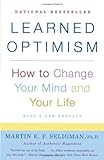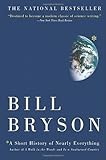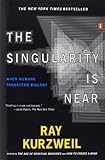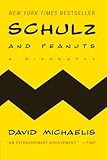This is an incredible article by Chris Hedges about the increasing isolation of Americans and what he sees as the socio-political implications of that isolation.
http://www.truthdig.com/report/item/the_lonely_american_20150628
Pages
A welcome to readers
As a resident of this planet for more than four fifths of a century, I have enjoyed both successes and disappointments in a wide variety of vocations, avocations, and life experiences. This blog satisfies my desire to share some thoughts and observations--trenchant and prosaic--with those who are searching for diversions which are interesting, poignant and occasionally funny. I also plan to share recommendations about good/great movies I've watched and books and articles which I've found particularly mind-opening, entertaining, instructive. In addition, I can't pass up the opportunity to reflect publicly on how I am experiencing the so-called Golden Years. Write anytime:
markmarv2004@yahoo.com
markmarv2004@yahoo.com
Monday, June 29, 2015
Thursday, June 25, 2015
THE FINGER POINTS AT ME: SHAME ON YOU, MARK!
This is a very insightful article that slapped me in the face, once again, with a truth that I, as a Kentucky-born and bred Southern-type-man, did not want to hear. Why? Because it is true, like it or not. I am ashamed of that racist part of my "heritage." I don't wish "I were in the land of cotton," 'cause "old times there" are far better not forgotten, but repudiated. Shame on me. Shame on us.
‘The Perpetrator Has Been Arrested, but the Killer Is Still at Large’
Posted on Jun 24, 2015
By Amy Goodman

The massacre of nine African-American worshippers at the Emanuel African Methodist Episcopal Church in Charleston, S.C., has sent shock waves through the nation and could well blow the roof off the Confederacy. Dylann Storm Roof is accused of methodically killing the congregants, reloading his Glock pistol at least twice. He let one victim live, according to a person who spoke with the survivor, so she could tell the world what happened. This brutal mass killing was blatantly racist, an overt act of terrorism.
Those murdered included the minister of the historic church, 41-year-old Rev. Clementa Pinckney, who also was an elected state senator in South Carolina and who was leading a Wednesday night Bible-study group. Roof actually sat in on the group for an hour before the massacre.
What little we know of Roof’s motivation for his alleged crime comes from a website he is believed to have created. A manifesto posted on the site says: “I chose Charleston because it is most historic city in my state, and at one time had the highest ratio of blacks to Whites in the country. We have no skinheads, no real KKK, no one doing anything but talking on the internet. Well someone has to have the bravery to take it to the real world, and I guess that has to be me.” A survivor of the shooting said that Roof told a victim begging for him to stop the killing: “I have to do it. You’re raping our women and taking over the country. You have to go.”
The website includes photos of Roof brandishing a gun, the .45-caliber Glock that is likely the murder weapon, and the Confederate flag, leading to renewed efforts to remove this symbol of racism and hate from flying on public property. For decades, the Confederate flag flew above the South Carolina Statehouse, along with the U.S. flag and the state flag of South Carolina. After the NAACP began a boycott of the state in the year 2000, a compromise was reached. The Confederate flag was removed from the state Capitol dome and placed on statehouse grounds, alongside a Confederate war memorial.
Among those who first stood up last week in favor of removing the flag was a white Republican serving in the South Carolina legislature, Doug Brannon. He told us on “Democracy Now!”: “I woke up Thursday morning to the news of the death of these nine wonderful people. I knew something had to be done then. ... Clementa Pinckney deserves this. Those nine people deserve this. Our state Capitol needs to be free of the flag.” When we asked him if he would consider a memorial to the victims of the Emanuel AME massacre, he said it was “a wonderful idea.”
The Rev. Dr. William J. Barber II is the president of the North Carolina NAACP. He heard about the slaughter on Wednesday night while in jail. “About 10 of us had been arrested in the state House in North Carolina for challenging extremist politicians who have passed the worst voter-suppression law in the country,” he said. Barber has led the “Moral Mondays” movement, with hundreds to thousands of people protesting weekly against the agenda being passed by North Carolina’s Republican-controlled state government. He favors removal of the Confederate flag, which he calls “vulgar,” but suggested that passing policy would be a more potent memorial to Clementa Pinckney and the other victims.
“Reverend Pinckney was not just opposed to the flag, he was opposed to the denial of Medicaid expansion,” Barber continued. “He was opposed to those who have celebrated the ending of the Voting Rights Act. He was opposed to the lack of funding for public education. He wanted to see living wages raised.” Addressing state Rep. Doug Brannon, Barber said: “Let’s put together an omnibus bill in the name of the nine martyrs. And all of the things Reverend Pinckney was standing for, if we say we love him and his colleagues, let’s put all of those things in a one big omnibus bill and pass that and bring it to the funeral on Friday.”
Wal-Mart, Amazon and other major retailers have pulled Confederate paraphernalia from their shelves. Alabama has taken down the flag, and other states, including South Carolina, are following. The symbol of the Southern states’ rebellion and secession, of waging war to protect slavery, will be less visible. But the fight for equality, waged 200 years ago by the very founders of Charleston’s Emanuel AME church, continues. As the Rev. Barber says, systemic change is essential: “The perpetrator has been arrested, but the killer is still at large.”
Denis Moynihan contributed research to this column.
Amy Goodman is the host of “Democracy Now!,” a daily international TV/radio news hour airing on more than 1,200 stations in North America. She is the co-author of “The Silenced Majority,” a New York Times best-seller.
(c) 2015 Amy Goodman
Distributed by King Features Syndicate

A Confederate flag flies behind the U.S. flag in Charleston, S.C., on Monday. (Darryl Brooks / Shutterstock.com)
Those murdered included the minister of the historic church, 41-year-old Rev. Clementa Pinckney, who also was an elected state senator in South Carolina and who was leading a Wednesday night Bible-study group. Roof actually sat in on the group for an hour before the massacre.
What little we know of Roof’s motivation for his alleged crime comes from a website he is believed to have created. A manifesto posted on the site says: “I chose Charleston because it is most historic city in my state, and at one time had the highest ratio of blacks to Whites in the country. We have no skinheads, no real KKK, no one doing anything but talking on the internet. Well someone has to have the bravery to take it to the real world, and I guess that has to be me.” A survivor of the shooting said that Roof told a victim begging for him to stop the killing: “I have to do it. You’re raping our women and taking over the country. You have to go.”
The website includes photos of Roof brandishing a gun, the .45-caliber Glock that is likely the murder weapon, and the Confederate flag, leading to renewed efforts to remove this symbol of racism and hate from flying on public property. For decades, the Confederate flag flew above the South Carolina Statehouse, along with the U.S. flag and the state flag of South Carolina. After the NAACP began a boycott of the state in the year 2000, a compromise was reached. The Confederate flag was removed from the state Capitol dome and placed on statehouse grounds, alongside a Confederate war memorial.
Among those who first stood up last week in favor of removing the flag was a white Republican serving in the South Carolina legislature, Doug Brannon. He told us on “Democracy Now!”: “I woke up Thursday morning to the news of the death of these nine wonderful people. I knew something had to be done then. ... Clementa Pinckney deserves this. Those nine people deserve this. Our state Capitol needs to be free of the flag.” When we asked him if he would consider a memorial to the victims of the Emanuel AME massacre, he said it was “a wonderful idea.”
The Rev. Dr. William J. Barber II is the president of the North Carolina NAACP. He heard about the slaughter on Wednesday night while in jail. “About 10 of us had been arrested in the state House in North Carolina for challenging extremist politicians who have passed the worst voter-suppression law in the country,” he said. Barber has led the “Moral Mondays” movement, with hundreds to thousands of people protesting weekly against the agenda being passed by North Carolina’s Republican-controlled state government. He favors removal of the Confederate flag, which he calls “vulgar,” but suggested that passing policy would be a more potent memorial to Clementa Pinckney and the other victims.
“Reverend Pinckney was not just opposed to the flag, he was opposed to the denial of Medicaid expansion,” Barber continued. “He was opposed to those who have celebrated the ending of the Voting Rights Act. He was opposed to the lack of funding for public education. He wanted to see living wages raised.” Addressing state Rep. Doug Brannon, Barber said: “Let’s put together an omnibus bill in the name of the nine martyrs. And all of the things Reverend Pinckney was standing for, if we say we love him and his colleagues, let’s put all of those things in a one big omnibus bill and pass that and bring it to the funeral on Friday.”
Wal-Mart, Amazon and other major retailers have pulled Confederate paraphernalia from their shelves. Alabama has taken down the flag, and other states, including South Carolina, are following. The symbol of the Southern states’ rebellion and secession, of waging war to protect slavery, will be less visible. But the fight for equality, waged 200 years ago by the very founders of Charleston’s Emanuel AME church, continues. As the Rev. Barber says, systemic change is essential: “The perpetrator has been arrested, but the killer is still at large.”
Denis Moynihan contributed research to this column.
Amy Goodman is the host of “Democracy Now!,” a daily international TV/radio news hour airing on more than 1,200 stations in North America. She is the co-author of “The Silenced Majority,” a New York Times best-seller.
(c) 2015 Amy Goodman
Distributed by King Features Syndicate
Monday, June 1, 2015
WORTHY BOOKS
I subscribe to Delancyplace.com blog and check it every day. The author's tastes generally agree with mine and I have bought and read many books based on his recommendations. Today, he encloses a list of the best 12 books of the last ten years, and then follows it with a list of the "best of the rest." For readers, I heartily recommend this list. I own and have read many of these books myself and have several more in my "to do" pile. Have fun.
|
Subscribe to:
Comments (Atom)




































